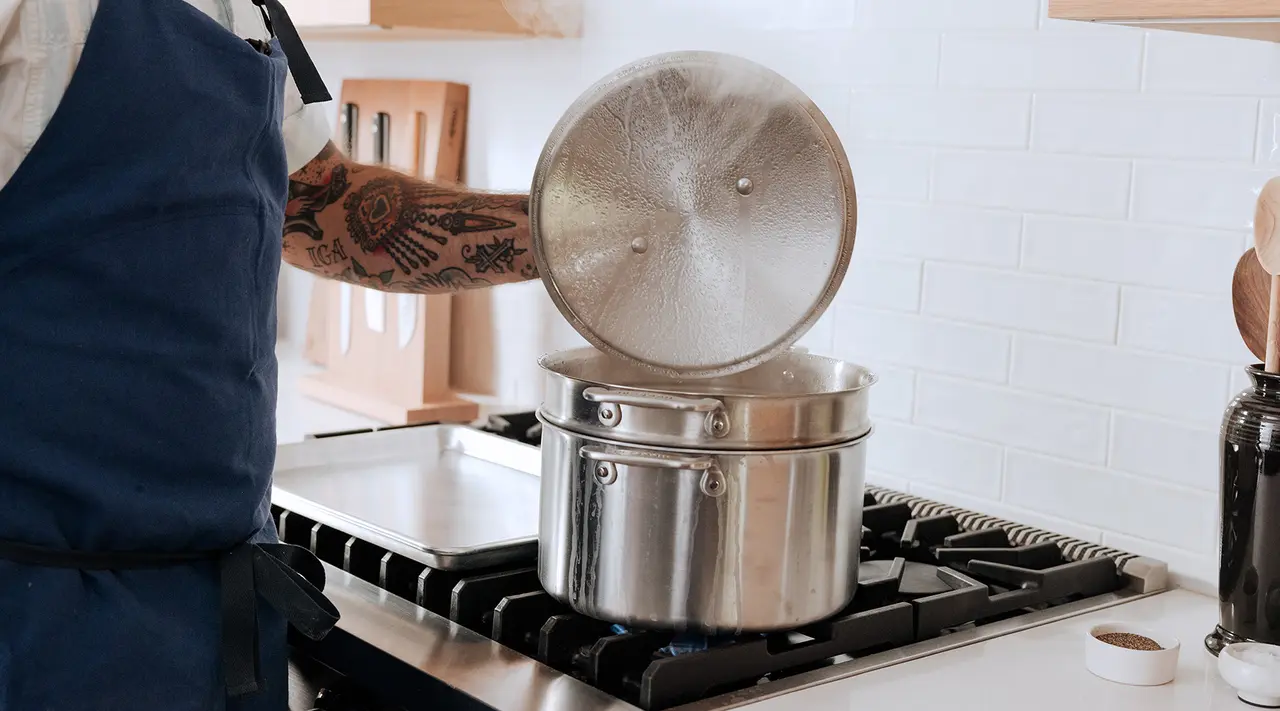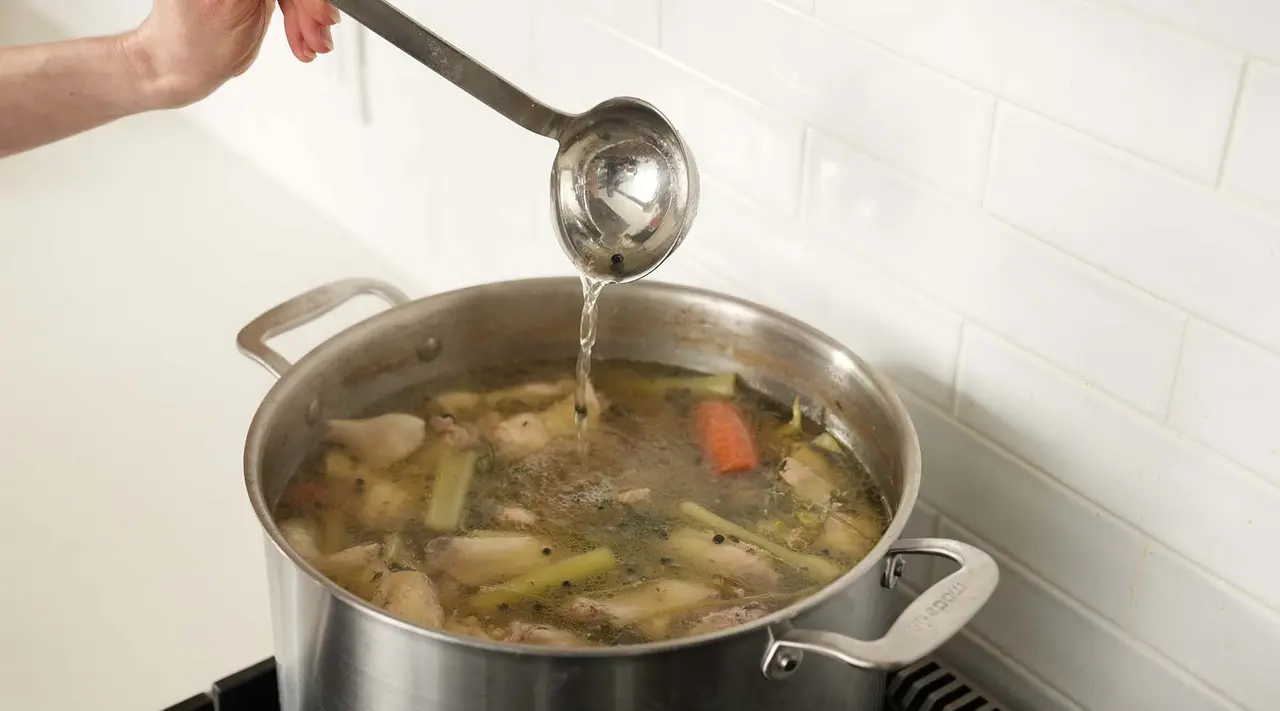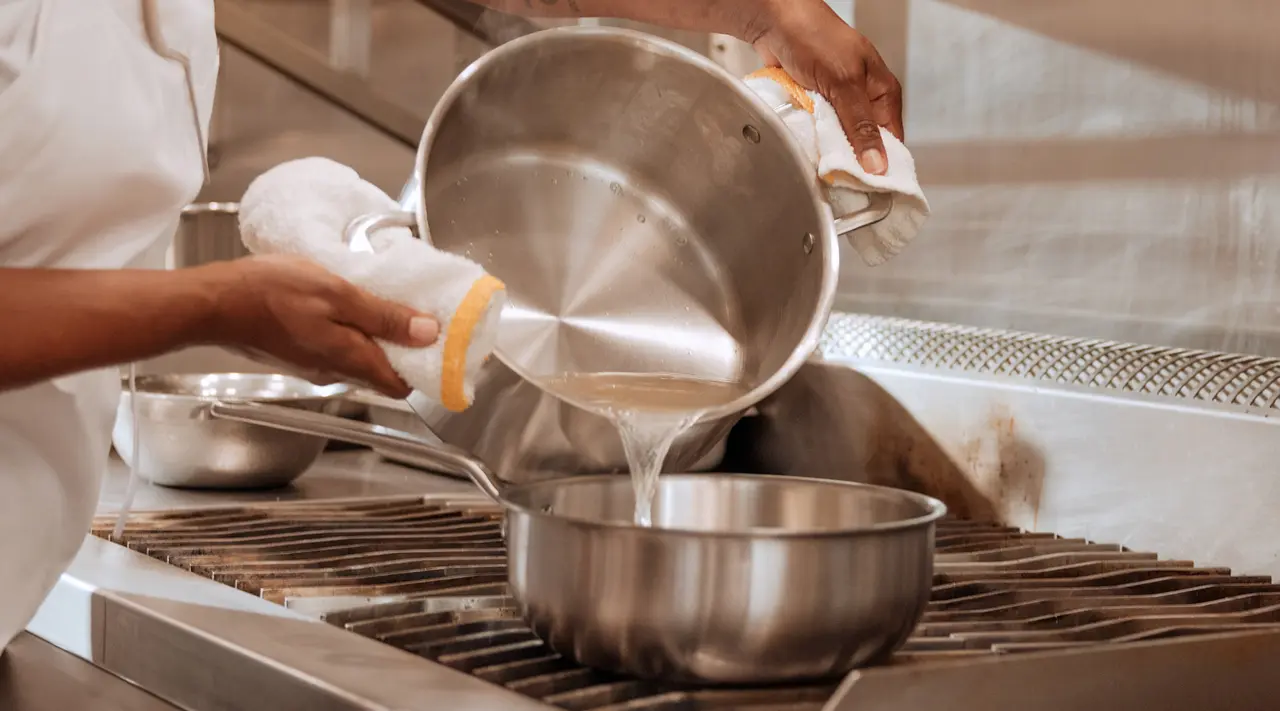Few pieces of cookware loom quite as large as the stock pot. Ideal for bringing a large volume of liquid to a boil quickly and circulating heat evenly, these pots are useful for pretty much any recipe that requires a large vessel— like boiling lobsters, sanitizing jars for homemade sauerkraut and pickles, and, of course, making tasty stocks and broths.
That being said, a really good stock pot—one that’s sturdy but not heavy, with a snug lid and well-constructed, ergonomic handles—can make a world of difference in your cooking. Here’s why we recommend having at least one high-quality stock pot on hand, even if you don’t plan on making stock or broth any time soon.
What Is a Stock Pot?

Tall and cylindrical with straight sides and a circular base, the most distinctive feature of a stock pot—and often the reason restaurant cooks, caterers, and almost anyone cooking food at scale tend to reach for them—is its volume. Ranging in size from around 6 quarts to an almost comically large 32 quarts, stock pots hold a lot more liquid than a saucepan, hence why they’re usually much taller and wider than other types of pots. The high sides help limit evaporation, making them ideal for soups, stocks, and boiling water for pasta or vegetables.
Another distinct feature of the stock pot is the handles. Rather than having one long handle that extends out from the rim of the pot (like a saucepan), stock pots typically feature two looped handles on opposite sides to make it easier to move these large, often-heavy pots on and off the heat. Ideally, stock pots will also be made of a lightweight, highly conductive material like stainless steel or aluminum for quick heating and temperature response.
6 Stock Pot Uses

As we mentioned, a stock pot is an incredibly versatile piece of cookware to have on hand. Here are some of our favorite ways to use it.
Batch Cooking and Meal Prep
Planning a seafood boil, soup for a holiday meal, or just making a big batch of chili to last the week? The stock pot has your back. You’d be hard-pressed to find a pot with the same capacity, other than a very large Dutch oven—though because these are often so much heavier, we don’t recommend filling them to the brim with piping hot liquid.
Another reason to use a stock pot for making big-batch meals is that you won’t have to worry about all the components cooking unevenly. A high-quality stainless steel pot will provide steady, even heat distribution, and will stay hot even after you’ve added all your ingredients. This is also a plus when you’re batch cooking in advance for an event or dinner party, as you can easily bring your soup or stew back up to a simmer when it’s time to serve.
Boiling Grains, Starches, and Legumes
Stock pots are also an ideal choice for cooking grains and legumes, which usually need plenty of space in order to expand and cook properly. Dried beans, for example, expand to as much as three times their original volume when cooked, meaning they also soak up a lot of water. Having a pot that circulates heat well—like our Stainless Clad Stock Pot—is important here, as it’ll help your beans cook evenly.
We also love cooking pasta in a stock pot—especially when we’re doing a big batch of it at once. A stock pot should ideally keep your pasta water at a rolling boil, encouraging movement and preventing your pasta from clumping at the bottom.
We even made a special Pasta Insert to make perfectly cooked pasta (especially fresh pasta) even easier—not only does it allow you to quickly drain your pasta the moment it’s done cooking, but it also means you won’t have to haul a heavy pot of water over to the sink when it’s time to drain. That means you can focus on that gorgeous bolognese you’ve got simmering alongside.
Canning and Preserving
Another place where a stock pot comes in incredibly useful is when you’re fermenting or preserving food. Whether you’re making lacto-fermented pickles or a big batch of seasonal fruit jam, making any kind of shelf-stable preserve requires a completely clean, sterilized mason jar or other sealable container. This means you’ll need to completely submerge your container in boiling water before filling it. The ample volume and height of a stock pot gives you plenty of room for sanitizing multiple large jars, as well as allowing you to seal them once they’re filled.
Cooking Soups and Stews
Along with pasta, chili, and homemade broth, you can also use a stock pot for cooking just about every rich, meaty, and/or slow-simmered stew you can think of. Depending on how much food you’re making, you’ll be able to easily submerge all your ingredients without overcrowding, allowing them to cook more evenly.
That means it’s perfect for cooking shellfish-filled bouillabaisse, or a fragrant posole made with an entire chicken. Plus, if you’re using a sturdy stainless steel pot, you can even use it to sear your meat before adding liquid.
Creating Stocks and Broths
Cue the royal fanfare: it’s finally time to talk about homemade stock (i.e. the stock pot’s raison d’etre.) Part of why the stock pot is so incredibly useful when it comes to making stocks and broths is the sheer volume of ingredients these recipes require, from cut-up beef bones to whole chicken carcasses. To fit all these ingredients—and to hold enough water that you’re not left with a scant cup of stock after three hours of simmering—you’ll need a pot with plenty of volume.
Steaming and Blanching
Using a stock pot can help you avoid one of the most unpleasant kitchen pitfalls: the mushy steamed vegetable. The large size means you can add a lot of vegetables (or seafood, or dumplings) to your Steamer Basket without overcrowding, thus allowing all your food to cook at the same rate. And remember those high sides and tight-fitting lid? Those will help keep the water from evaporating before you’re done cooking.
Ready to Shop?
For its size alone, the stock pot deserves a permanent place in our lineup of heavyweight kitchen champions. We can’t think of any other pot that can steam multiple whole lobsters, boil an entire chicken for stock, or cook a party’s worth of pasta to al dente perfection.
But a really good stock pot offers even more: our 5-Ply Stainless Clad Stock Pot is engineered for optimal heat circulation and responsiveness, giving you plenty of control over the final results. And for overachievers or those looking to set their kitchen up for success, our Multi-Pot bundle unlocks all 6 uses on this list, from steaming to cooking pasta to everything else in between.































